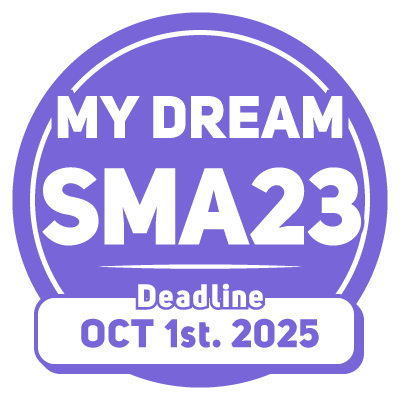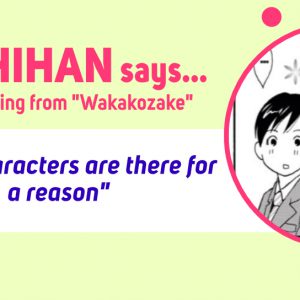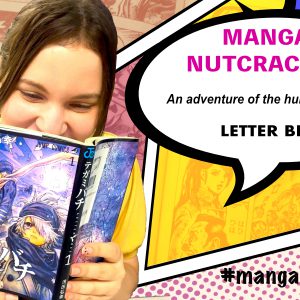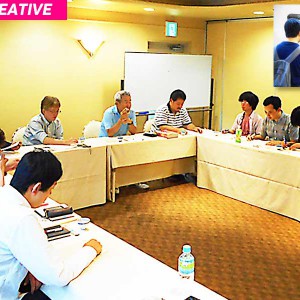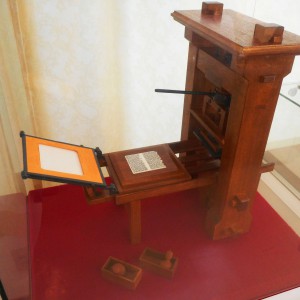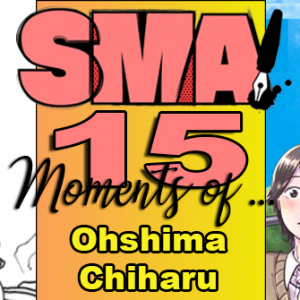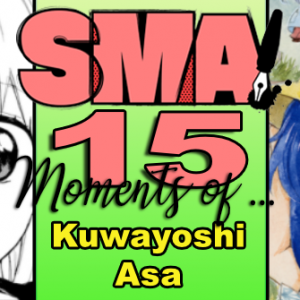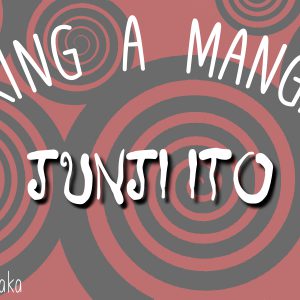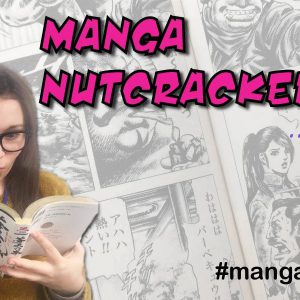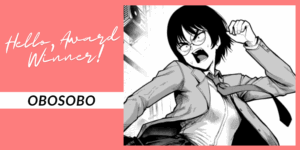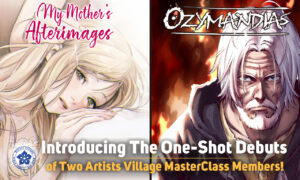ANY ROAD LEADS TO AN EDITOR!
Hi guys!
Today I will introduce to you some ways to become an editor, since we received some comments about “how” to become one!
Here in Japan, the new financial year starts from April. During this season, we often welcome new workers into our office. Our company Coamix has accepted two rookies for this year, and they have been doing some job training since March.
So, how did they get here? How about the other senior editors?
Let’s go ask why and how they got to be a member of this company!
 I was always a big fan of manga, but I didn’t have the talent to become a manga artist (I’m not good at drawing at all!), so I dreamed of becoming an editor to help create manga. I was in high school when I first thought of becoming an editor. That was the time I changed my specialty from science to humanity. My dream used to be becoming a vet, but I realized that I wanted to be able to do more things. I wanted to communicate with more people, and also wanted to leave behind something I had created. My love for manga mixed with those feelings, making me decide to become an editor.
The reason why I applied was simply because it was time to do so. In Japan, it is normal to start looking for a job during one’s 3rd year of college. At that time I was introduced to Coamix by a recruitment agent, so I simply decided to take the entrance exam. I didn’t consider working for part-time. For Japanese people, it’s common sense that you should work as a fulltime employee after graduation, and I wanted to convince my parents to let me do this job.
For the exam, I read a lot of books besides manga, in order to improve my writing skills. In the Japanese publication industry, there is usually a paper test that requires an essay in a “Sandai-banashi” style, a style to create a story out of three random words. Even though I wanted to make manga, improving my writing skills was an important issue for that reason.
The recruiting process went like this: First I sent a resume, then took the writing exam, then wrote a short essay, and had three interviews. The writing exam was basically about common knowledge and current topics. The essay, as mentioned above, was the “Sandai-banashi” essay. And at the meeting, I was asked to explain what I want to do here, and about my image of myself working here. The writing and essay wasn’t so hard for me, since I was able to prepare for it. But I did feel the interview was very difficult, because I couldn’t prepare for anything. Above all, I had trouble in imagining myself actually working here. Of course, the companies ask this question to test our imagination. They aren’t asking it for no reason; they just want to know the potential of this untrained person. But an editor’s job is not something you can usually see, and I really needed to talk with a lot of former graduates of my university, and try my best to create an image closer to the actual workplace.
Now that I have joined this company, my dream is to become an editor who can influence people in a positive way. It would be great if someone would read one of the mangas I helped create, and be stimulated to dream of becoming an editor.
I was always a big fan of manga, but I didn’t have the talent to become a manga artist (I’m not good at drawing at all!), so I dreamed of becoming an editor to help create manga. I was in high school when I first thought of becoming an editor. That was the time I changed my specialty from science to humanity. My dream used to be becoming a vet, but I realized that I wanted to be able to do more things. I wanted to communicate with more people, and also wanted to leave behind something I had created. My love for manga mixed with those feelings, making me decide to become an editor.
The reason why I applied was simply because it was time to do so. In Japan, it is normal to start looking for a job during one’s 3rd year of college. At that time I was introduced to Coamix by a recruitment agent, so I simply decided to take the entrance exam. I didn’t consider working for part-time. For Japanese people, it’s common sense that you should work as a fulltime employee after graduation, and I wanted to convince my parents to let me do this job.
For the exam, I read a lot of books besides manga, in order to improve my writing skills. In the Japanese publication industry, there is usually a paper test that requires an essay in a “Sandai-banashi” style, a style to create a story out of three random words. Even though I wanted to make manga, improving my writing skills was an important issue for that reason.
The recruiting process went like this: First I sent a resume, then took the writing exam, then wrote a short essay, and had three interviews. The writing exam was basically about common knowledge and current topics. The essay, as mentioned above, was the “Sandai-banashi” essay. And at the meeting, I was asked to explain what I want to do here, and about my image of myself working here. The writing and essay wasn’t so hard for me, since I was able to prepare for it. But I did feel the interview was very difficult, because I couldn’t prepare for anything. Above all, I had trouble in imagining myself actually working here. Of course, the companies ask this question to test our imagination. They aren’t asking it for no reason; they just want to know the potential of this untrained person. But an editor’s job is not something you can usually see, and I really needed to talk with a lot of former graduates of my university, and try my best to create an image closer to the actual workplace.
Now that I have joined this company, my dream is to become an editor who can influence people in a positive way. It would be great if someone would read one of the mangas I helped create, and be stimulated to dream of becoming an editor.
 I remember it was during my days at college when I first thought of becoming an editor. I have loved manga ever since I was a child, and I went to a university of humanities, so I naturally started to think of becoming one. That is why I narrowed down my job search to publication companies and editing companies during the new graduate recruitment period, and finally I settled on one as an editor of a car magazine. Everything was fine, except for one problem… I wasn’t that interested in cars. In the end I worked there for a year and a half, but I couldn’t extinguish my dream of doing a job that I love, so I decided to change my job.
So, there I was, taking various exams for publishers and editors again, and it was Coamix which hired me in the end. I was originally intending to take the recruitment exam for contract employees, but at that time they were only recruiting “Arbeits”, so I took this job.
“Arbeit” is a German term for “labor”, and in Japan it means to “work as an apprentice”. For an Arbeit employee, it usually takes 6 months to step up to a contract employee, and an additional 1 year to become a regular employee. However, I didn’t think of myself as an Arbeit that much, because I was actually treated almost the same as the other kind of workers… like being appointed to Hojo sensei’s editor, and working on holidays. I was just lucky enough to end up here, while doing my daily deeds.
From my experience at my former company, I did have the ability to write articles, take photos, think of layouts, and all those basic skills. However, for those who don’t have any experience at all, Arbeit employees have lots to learn without being properly taught, so it may be tough. Moreover, arbeit employee have less insurance than contract employees and regular employees, so it may be tougher to join the company as an Arbeit, than at the new graduate recruitment.
However, the good point of this path is that it is easier to get a job. Especially compared to mid-career recruitment, where the applicants often need to bring their own business plans besides their portfolio. For our kind of company, taking on a mid-career worker means bringing in new ideas, which requires the applicants to have impressive creative skills. Arbeit employees do start from a low position, but that means that they have enough time to develop that creativity.
It is better to be able to draw, but it isn’t something necessary for a technique. It is rather the ability to be able to precisely express the things you are thinking. Also, it is really important to be able to talk about any topic, as Mr. Horie often says.
I believe that people who are good at praising people’s work makes a good editor. This job requires looking at lots of manga. Among those manga, there are ones which are not well drawn, or the ones which were drawn for the first time. If you are able to find even a single good point, it is possible to improve that manga into a better one. Besides that, it is also important to be able to manage several tasks at once, since editors need to do several pieces of work at the same time. Especially for the Arbeit employees, you start with small things, and go onto more important and wide range of work. If you want to become an editor, focusing on these abilities may help you.
I remember it was during my days at college when I first thought of becoming an editor. I have loved manga ever since I was a child, and I went to a university of humanities, so I naturally started to think of becoming one. That is why I narrowed down my job search to publication companies and editing companies during the new graduate recruitment period, and finally I settled on one as an editor of a car magazine. Everything was fine, except for one problem… I wasn’t that interested in cars. In the end I worked there for a year and a half, but I couldn’t extinguish my dream of doing a job that I love, so I decided to change my job.
So, there I was, taking various exams for publishers and editors again, and it was Coamix which hired me in the end. I was originally intending to take the recruitment exam for contract employees, but at that time they were only recruiting “Arbeits”, so I took this job.
“Arbeit” is a German term for “labor”, and in Japan it means to “work as an apprentice”. For an Arbeit employee, it usually takes 6 months to step up to a contract employee, and an additional 1 year to become a regular employee. However, I didn’t think of myself as an Arbeit that much, because I was actually treated almost the same as the other kind of workers… like being appointed to Hojo sensei’s editor, and working on holidays. I was just lucky enough to end up here, while doing my daily deeds.
From my experience at my former company, I did have the ability to write articles, take photos, think of layouts, and all those basic skills. However, for those who don’t have any experience at all, Arbeit employees have lots to learn without being properly taught, so it may be tough. Moreover, arbeit employee have less insurance than contract employees and regular employees, so it may be tougher to join the company as an Arbeit, than at the new graduate recruitment.
However, the good point of this path is that it is easier to get a job. Especially compared to mid-career recruitment, where the applicants often need to bring their own business plans besides their portfolio. For our kind of company, taking on a mid-career worker means bringing in new ideas, which requires the applicants to have impressive creative skills. Arbeit employees do start from a low position, but that means that they have enough time to develop that creativity.
It is better to be able to draw, but it isn’t something necessary for a technique. It is rather the ability to be able to precisely express the things you are thinking. Also, it is really important to be able to talk about any topic, as Mr. Horie often says.
I believe that people who are good at praising people’s work makes a good editor. This job requires looking at lots of manga. Among those manga, there are ones which are not well drawn, or the ones which were drawn for the first time. If you are able to find even a single good point, it is possible to improve that manga into a better one. Besides that, it is also important to be able to manage several tasks at once, since editors need to do several pieces of work at the same time. Especially for the Arbeit employees, you start with small things, and go onto more important and wide range of work. If you want to become an editor, focusing on these abilities may help you.
 The reason I became an editor is actually not because I like manga. After breaking up with a girlfriend at 23 years old, I went through a slump, and was desperate to find a new job to forget her. Then I happened to find an advertisement for an editor’ job at a men’s magazine, and I thought it would be an interesting job to do.
The recruiting process was simple; I went to the interview, and wrote a short essay. I still remember the theme, which was to “create a whole interview article about yourself, with yourself”. I wrote an essay about me as “a person from Kansai (a region in Japan), who hates people from Kansai”. And unexpectedly, the interviewer of that exam also didn’t feel good about people from Kansai! And between one thing and another, I passed the entrance exam of that company, and started working from the next day. It was a job which was like a cameraman, a writer, an editor, and a designer all combined together.
Coamix is the 3rd company I’ve worked for, and it was all because of Mochida-san’s words that I decided to come here. Being introduced to him by a fellow editor, I heard about this company and felt that it must be an enjoyable place to work. However, I first decided to refuse his invitation, since I was detained by my boss at my former company. Because I felt it would be rude to refuse by phone, I went to see him directly, one night on Christmas Eve. He took me to a fugu (A puffer fish. Expensive food in Japan) restaurant, and while we were talking, Mochida-san said something really impressive: “There are only two kinds of people in the world. One is the people who can grasp a chance, another is the people who can’t.” When I heard those words, I was so impressed by him, and changed my mind about accepting the job. It was tough to convince the boss at my former company, though!
So, I have experienced three types of magazines: a men’s magazine, a gambling magazine, and a manga magazine. I do think they all share the same basics, in that they all seek to fulfill the reader’s needs.
I heard that there are lots of questions about the necessity of drawing ability. It isn’t necessary, although that ability would help you on many occasions, especially when trying to explain something to someone else. In fact, I am not good at drawing, either!
There are lots of other things which are more important than drawing. Being able to make a choice objectively is one thing. Of course that means the skill to pick a good idea, but it also an important skill which works well when you need to combine several ideas. It is also very important to be able to enjoy this job. An editor is a tough job with lots of work to do, so if you want to survive as an editor, then you definitely need to like all the works. And finally, it is better to have a human loving nature. This doesn’t simply mean to be a softhearted person. I mean, a person who is always interested in others, that can notice the features of others, and is always willing to communicate with them. Those kinds of people are very suitable as an editor. Our boss Mr. Horie, for instance, always communicates with us, and sometimes teases us. Its times like that when I really think he is a typical editor.
The reason I became an editor is actually not because I like manga. After breaking up with a girlfriend at 23 years old, I went through a slump, and was desperate to find a new job to forget her. Then I happened to find an advertisement for an editor’ job at a men’s magazine, and I thought it would be an interesting job to do.
The recruiting process was simple; I went to the interview, and wrote a short essay. I still remember the theme, which was to “create a whole interview article about yourself, with yourself”. I wrote an essay about me as “a person from Kansai (a region in Japan), who hates people from Kansai”. And unexpectedly, the interviewer of that exam also didn’t feel good about people from Kansai! And between one thing and another, I passed the entrance exam of that company, and started working from the next day. It was a job which was like a cameraman, a writer, an editor, and a designer all combined together.
Coamix is the 3rd company I’ve worked for, and it was all because of Mochida-san’s words that I decided to come here. Being introduced to him by a fellow editor, I heard about this company and felt that it must be an enjoyable place to work. However, I first decided to refuse his invitation, since I was detained by my boss at my former company. Because I felt it would be rude to refuse by phone, I went to see him directly, one night on Christmas Eve. He took me to a fugu (A puffer fish. Expensive food in Japan) restaurant, and while we were talking, Mochida-san said something really impressive: “There are only two kinds of people in the world. One is the people who can grasp a chance, another is the people who can’t.” When I heard those words, I was so impressed by him, and changed my mind about accepting the job. It was tough to convince the boss at my former company, though!
So, I have experienced three types of magazines: a men’s magazine, a gambling magazine, and a manga magazine. I do think they all share the same basics, in that they all seek to fulfill the reader’s needs.
I heard that there are lots of questions about the necessity of drawing ability. It isn’t necessary, although that ability would help you on many occasions, especially when trying to explain something to someone else. In fact, I am not good at drawing, either!
There are lots of other things which are more important than drawing. Being able to make a choice objectively is one thing. Of course that means the skill to pick a good idea, but it also an important skill which works well when you need to combine several ideas. It is also very important to be able to enjoy this job. An editor is a tough job with lots of work to do, so if you want to survive as an editor, then you definitely need to like all the works. And finally, it is better to have a human loving nature. This doesn’t simply mean to be a softhearted person. I mean, a person who is always interested in others, that can notice the features of others, and is always willing to communicate with them. Those kinds of people are very suitable as an editor. Our boss Mr. Horie, for instance, always communicates with us, and sometimes teases us. Its times like that when I really think he is a typical editor.
One of my favorite Japanese sayings is “Every person has their own history”. This interview with the three men really reminded me of this saying, and it was so interesting to hear the story behind my colleagues. Although the Japanese recruiting system is said to be very stable and inflexible, there are so many ways to become an editor, if you just try. I hope you got an idea of how an editor is hired, and also what they think is important for an editor! In the next episode, I will explain the “Nyuko” process, and all the preparation the editors do to get the proof sheet! Do you have any further questions? Or do you want to send a message to Yokoyama-san, Tanaka-san or Hisanaga san? Let me know in the comments! [catlist name=”MANGA INSIDER MAYU” thumbnail=”yes” thumbnail_size=160 content=”no” date=”yes” dateformat=”M j, Y G:i” template=page_list]
CASE 1: Mr. Keitaro Yokoyama
Mr. Yokoyama is one of the freshmen workers who started working here from March. He joined our company through “Shinsotsu Saiyo”, the Japanese system of recruiting fresh university graduates every year. As a new “regular employee”, he is going to tell us what it was like to attend this system. I was always a big fan of manga, but I didn’t have the talent to become a manga artist (I’m not good at drawing at all!), so I dreamed of becoming an editor to help create manga. I was in high school when I first thought of becoming an editor. That was the time I changed my specialty from science to humanity. My dream used to be becoming a vet, but I realized that I wanted to be able to do more things. I wanted to communicate with more people, and also wanted to leave behind something I had created. My love for manga mixed with those feelings, making me decide to become an editor.
The reason why I applied was simply because it was time to do so. In Japan, it is normal to start looking for a job during one’s 3rd year of college. At that time I was introduced to Coamix by a recruitment agent, so I simply decided to take the entrance exam. I didn’t consider working for part-time. For Japanese people, it’s common sense that you should work as a fulltime employee after graduation, and I wanted to convince my parents to let me do this job.
For the exam, I read a lot of books besides manga, in order to improve my writing skills. In the Japanese publication industry, there is usually a paper test that requires an essay in a “Sandai-banashi” style, a style to create a story out of three random words. Even though I wanted to make manga, improving my writing skills was an important issue for that reason.
The recruiting process went like this: First I sent a resume, then took the writing exam, then wrote a short essay, and had three interviews. The writing exam was basically about common knowledge and current topics. The essay, as mentioned above, was the “Sandai-banashi” essay. And at the meeting, I was asked to explain what I want to do here, and about my image of myself working here. The writing and essay wasn’t so hard for me, since I was able to prepare for it. But I did feel the interview was very difficult, because I couldn’t prepare for anything. Above all, I had trouble in imagining myself actually working here. Of course, the companies ask this question to test our imagination. They aren’t asking it for no reason; they just want to know the potential of this untrained person. But an editor’s job is not something you can usually see, and I really needed to talk with a lot of former graduates of my university, and try my best to create an image closer to the actual workplace.
Now that I have joined this company, my dream is to become an editor who can influence people in a positive way. It would be great if someone would read one of the mangas I helped create, and be stimulated to dream of becoming an editor.
I was always a big fan of manga, but I didn’t have the talent to become a manga artist (I’m not good at drawing at all!), so I dreamed of becoming an editor to help create manga. I was in high school when I first thought of becoming an editor. That was the time I changed my specialty from science to humanity. My dream used to be becoming a vet, but I realized that I wanted to be able to do more things. I wanted to communicate with more people, and also wanted to leave behind something I had created. My love for manga mixed with those feelings, making me decide to become an editor.
The reason why I applied was simply because it was time to do so. In Japan, it is normal to start looking for a job during one’s 3rd year of college. At that time I was introduced to Coamix by a recruitment agent, so I simply decided to take the entrance exam. I didn’t consider working for part-time. For Japanese people, it’s common sense that you should work as a fulltime employee after graduation, and I wanted to convince my parents to let me do this job.
For the exam, I read a lot of books besides manga, in order to improve my writing skills. In the Japanese publication industry, there is usually a paper test that requires an essay in a “Sandai-banashi” style, a style to create a story out of three random words. Even though I wanted to make manga, improving my writing skills was an important issue for that reason.
The recruiting process went like this: First I sent a resume, then took the writing exam, then wrote a short essay, and had three interviews. The writing exam was basically about common knowledge and current topics. The essay, as mentioned above, was the “Sandai-banashi” essay. And at the meeting, I was asked to explain what I want to do here, and about my image of myself working here. The writing and essay wasn’t so hard for me, since I was able to prepare for it. But I did feel the interview was very difficult, because I couldn’t prepare for anything. Above all, I had trouble in imagining myself actually working here. Of course, the companies ask this question to test our imagination. They aren’t asking it for no reason; they just want to know the potential of this untrained person. But an editor’s job is not something you can usually see, and I really needed to talk with a lot of former graduates of my university, and try my best to create an image closer to the actual workplace.
Now that I have joined this company, my dream is to become an editor who can influence people in a positive way. It would be great if someone would read one of the mangas I helped create, and be stimulated to dream of becoming an editor.
CASE 2: Mr. Tsuyoshi Tanaka
Mr. Tanaka, who is the editor in charge of Hojo sensei’s work, had a different kind of experience of joining this company. He initially started working here as a part-timer, or “Arbeit” in Japanese. The work “Arbeit” may sound unfamiliar to most of you. What was that like? He will tell us. I remember it was during my days at college when I first thought of becoming an editor. I have loved manga ever since I was a child, and I went to a university of humanities, so I naturally started to think of becoming one. That is why I narrowed down my job search to publication companies and editing companies during the new graduate recruitment period, and finally I settled on one as an editor of a car magazine. Everything was fine, except for one problem… I wasn’t that interested in cars. In the end I worked there for a year and a half, but I couldn’t extinguish my dream of doing a job that I love, so I decided to change my job.
So, there I was, taking various exams for publishers and editors again, and it was Coamix which hired me in the end. I was originally intending to take the recruitment exam for contract employees, but at that time they were only recruiting “Arbeits”, so I took this job.
“Arbeit” is a German term for “labor”, and in Japan it means to “work as an apprentice”. For an Arbeit employee, it usually takes 6 months to step up to a contract employee, and an additional 1 year to become a regular employee. However, I didn’t think of myself as an Arbeit that much, because I was actually treated almost the same as the other kind of workers… like being appointed to Hojo sensei’s editor, and working on holidays. I was just lucky enough to end up here, while doing my daily deeds.
From my experience at my former company, I did have the ability to write articles, take photos, think of layouts, and all those basic skills. However, for those who don’t have any experience at all, Arbeit employees have lots to learn without being properly taught, so it may be tough. Moreover, arbeit employee have less insurance than contract employees and regular employees, so it may be tougher to join the company as an Arbeit, than at the new graduate recruitment.
However, the good point of this path is that it is easier to get a job. Especially compared to mid-career recruitment, where the applicants often need to bring their own business plans besides their portfolio. For our kind of company, taking on a mid-career worker means bringing in new ideas, which requires the applicants to have impressive creative skills. Arbeit employees do start from a low position, but that means that they have enough time to develop that creativity.
It is better to be able to draw, but it isn’t something necessary for a technique. It is rather the ability to be able to precisely express the things you are thinking. Also, it is really important to be able to talk about any topic, as Mr. Horie often says.
I believe that people who are good at praising people’s work makes a good editor. This job requires looking at lots of manga. Among those manga, there are ones which are not well drawn, or the ones which were drawn for the first time. If you are able to find even a single good point, it is possible to improve that manga into a better one. Besides that, it is also important to be able to manage several tasks at once, since editors need to do several pieces of work at the same time. Especially for the Arbeit employees, you start with small things, and go onto more important and wide range of work. If you want to become an editor, focusing on these abilities may help you.
I remember it was during my days at college when I first thought of becoming an editor. I have loved manga ever since I was a child, and I went to a university of humanities, so I naturally started to think of becoming one. That is why I narrowed down my job search to publication companies and editing companies during the new graduate recruitment period, and finally I settled on one as an editor of a car magazine. Everything was fine, except for one problem… I wasn’t that interested in cars. In the end I worked there for a year and a half, but I couldn’t extinguish my dream of doing a job that I love, so I decided to change my job.
So, there I was, taking various exams for publishers and editors again, and it was Coamix which hired me in the end. I was originally intending to take the recruitment exam for contract employees, but at that time they were only recruiting “Arbeits”, so I took this job.
“Arbeit” is a German term for “labor”, and in Japan it means to “work as an apprentice”. For an Arbeit employee, it usually takes 6 months to step up to a contract employee, and an additional 1 year to become a regular employee. However, I didn’t think of myself as an Arbeit that much, because I was actually treated almost the same as the other kind of workers… like being appointed to Hojo sensei’s editor, and working on holidays. I was just lucky enough to end up here, while doing my daily deeds.
From my experience at my former company, I did have the ability to write articles, take photos, think of layouts, and all those basic skills. However, for those who don’t have any experience at all, Arbeit employees have lots to learn without being properly taught, so it may be tough. Moreover, arbeit employee have less insurance than contract employees and regular employees, so it may be tougher to join the company as an Arbeit, than at the new graduate recruitment.
However, the good point of this path is that it is easier to get a job. Especially compared to mid-career recruitment, where the applicants often need to bring their own business plans besides their portfolio. For our kind of company, taking on a mid-career worker means bringing in new ideas, which requires the applicants to have impressive creative skills. Arbeit employees do start from a low position, but that means that they have enough time to develop that creativity.
It is better to be able to draw, but it isn’t something necessary for a technique. It is rather the ability to be able to precisely express the things you are thinking. Also, it is really important to be able to talk about any topic, as Mr. Horie often says.
I believe that people who are good at praising people’s work makes a good editor. This job requires looking at lots of manga. Among those manga, there are ones which are not well drawn, or the ones which were drawn for the first time. If you are able to find even a single good point, it is possible to improve that manga into a better one. Besides that, it is also important to be able to manage several tasks at once, since editors need to do several pieces of work at the same time. Especially for the Arbeit employees, you start with small things, and go onto more important and wide range of work. If you want to become an editor, focusing on these abilities may help you.
CASE 3: Mr. Kenji Hisanaga
Mr, Hisanaga is one of the current vice-chief editors at Comic ZENON, who has worked on many hit mangas. He says he actually wasn’t supposed to be an editor!? And it seems like he took an irregular path to becoming one! He will tell us about the important things for an editor, based on his long experience working at several magazines. The reason I became an editor is actually not because I like manga. After breaking up with a girlfriend at 23 years old, I went through a slump, and was desperate to find a new job to forget her. Then I happened to find an advertisement for an editor’ job at a men’s magazine, and I thought it would be an interesting job to do.
The recruiting process was simple; I went to the interview, and wrote a short essay. I still remember the theme, which was to “create a whole interview article about yourself, with yourself”. I wrote an essay about me as “a person from Kansai (a region in Japan), who hates people from Kansai”. And unexpectedly, the interviewer of that exam also didn’t feel good about people from Kansai! And between one thing and another, I passed the entrance exam of that company, and started working from the next day. It was a job which was like a cameraman, a writer, an editor, and a designer all combined together.
Coamix is the 3rd company I’ve worked for, and it was all because of Mochida-san’s words that I decided to come here. Being introduced to him by a fellow editor, I heard about this company and felt that it must be an enjoyable place to work. However, I first decided to refuse his invitation, since I was detained by my boss at my former company. Because I felt it would be rude to refuse by phone, I went to see him directly, one night on Christmas Eve. He took me to a fugu (A puffer fish. Expensive food in Japan) restaurant, and while we were talking, Mochida-san said something really impressive: “There are only two kinds of people in the world. One is the people who can grasp a chance, another is the people who can’t.” When I heard those words, I was so impressed by him, and changed my mind about accepting the job. It was tough to convince the boss at my former company, though!
So, I have experienced three types of magazines: a men’s magazine, a gambling magazine, and a manga magazine. I do think they all share the same basics, in that they all seek to fulfill the reader’s needs.
I heard that there are lots of questions about the necessity of drawing ability. It isn’t necessary, although that ability would help you on many occasions, especially when trying to explain something to someone else. In fact, I am not good at drawing, either!
There are lots of other things which are more important than drawing. Being able to make a choice objectively is one thing. Of course that means the skill to pick a good idea, but it also an important skill which works well when you need to combine several ideas. It is also very important to be able to enjoy this job. An editor is a tough job with lots of work to do, so if you want to survive as an editor, then you definitely need to like all the works. And finally, it is better to have a human loving nature. This doesn’t simply mean to be a softhearted person. I mean, a person who is always interested in others, that can notice the features of others, and is always willing to communicate with them. Those kinds of people are very suitable as an editor. Our boss Mr. Horie, for instance, always communicates with us, and sometimes teases us. Its times like that when I really think he is a typical editor.
The reason I became an editor is actually not because I like manga. After breaking up with a girlfriend at 23 years old, I went through a slump, and was desperate to find a new job to forget her. Then I happened to find an advertisement for an editor’ job at a men’s magazine, and I thought it would be an interesting job to do.
The recruiting process was simple; I went to the interview, and wrote a short essay. I still remember the theme, which was to “create a whole interview article about yourself, with yourself”. I wrote an essay about me as “a person from Kansai (a region in Japan), who hates people from Kansai”. And unexpectedly, the interviewer of that exam also didn’t feel good about people from Kansai! And between one thing and another, I passed the entrance exam of that company, and started working from the next day. It was a job which was like a cameraman, a writer, an editor, and a designer all combined together.
Coamix is the 3rd company I’ve worked for, and it was all because of Mochida-san’s words that I decided to come here. Being introduced to him by a fellow editor, I heard about this company and felt that it must be an enjoyable place to work. However, I first decided to refuse his invitation, since I was detained by my boss at my former company. Because I felt it would be rude to refuse by phone, I went to see him directly, one night on Christmas Eve. He took me to a fugu (A puffer fish. Expensive food in Japan) restaurant, and while we were talking, Mochida-san said something really impressive: “There are only two kinds of people in the world. One is the people who can grasp a chance, another is the people who can’t.” When I heard those words, I was so impressed by him, and changed my mind about accepting the job. It was tough to convince the boss at my former company, though!
So, I have experienced three types of magazines: a men’s magazine, a gambling magazine, and a manga magazine. I do think they all share the same basics, in that they all seek to fulfill the reader’s needs.
I heard that there are lots of questions about the necessity of drawing ability. It isn’t necessary, although that ability would help you on many occasions, especially when trying to explain something to someone else. In fact, I am not good at drawing, either!
There are lots of other things which are more important than drawing. Being able to make a choice objectively is one thing. Of course that means the skill to pick a good idea, but it also an important skill which works well when you need to combine several ideas. It is also very important to be able to enjoy this job. An editor is a tough job with lots of work to do, so if you want to survive as an editor, then you definitely need to like all the works. And finally, it is better to have a human loving nature. This doesn’t simply mean to be a softhearted person. I mean, a person who is always interested in others, that can notice the features of others, and is always willing to communicate with them. Those kinds of people are very suitable as an editor. Our boss Mr. Horie, for instance, always communicates with us, and sometimes teases us. Its times like that when I really think he is a typical editor.
One of my favorite Japanese sayings is “Every person has their own history”. This interview with the three men really reminded me of this saying, and it was so interesting to hear the story behind my colleagues. Although the Japanese recruiting system is said to be very stable and inflexible, there are so many ways to become an editor, if you just try. I hope you got an idea of how an editor is hired, and also what they think is important for an editor! In the next episode, I will explain the “Nyuko” process, and all the preparation the editors do to get the proof sheet! Do you have any further questions? Or do you want to send a message to Yokoyama-san, Tanaka-san or Hisanaga san? Let me know in the comments! [catlist name=”MANGA INSIDER MAYU” thumbnail=”yes” thumbnail_size=160 content=”no” date=”yes” dateformat=”M j, Y G:i” template=page_list]
